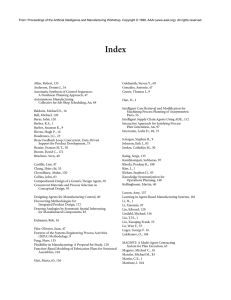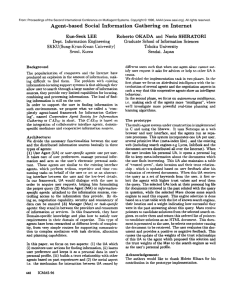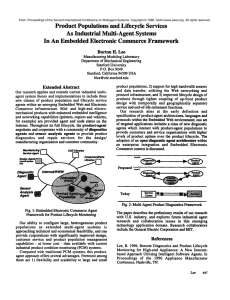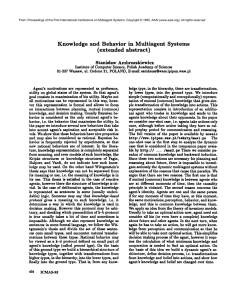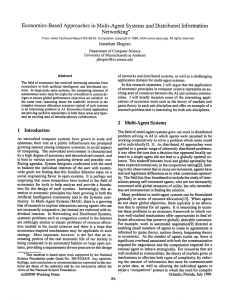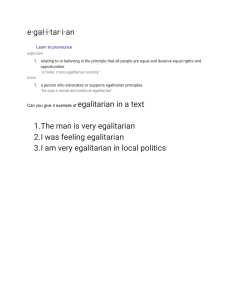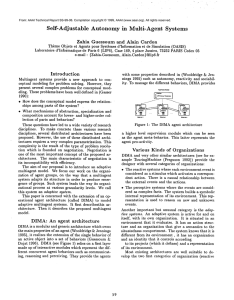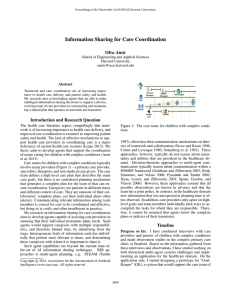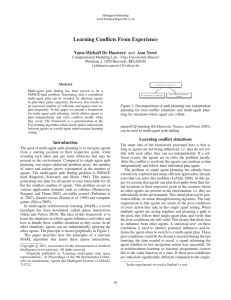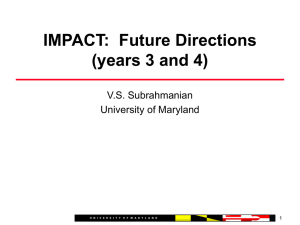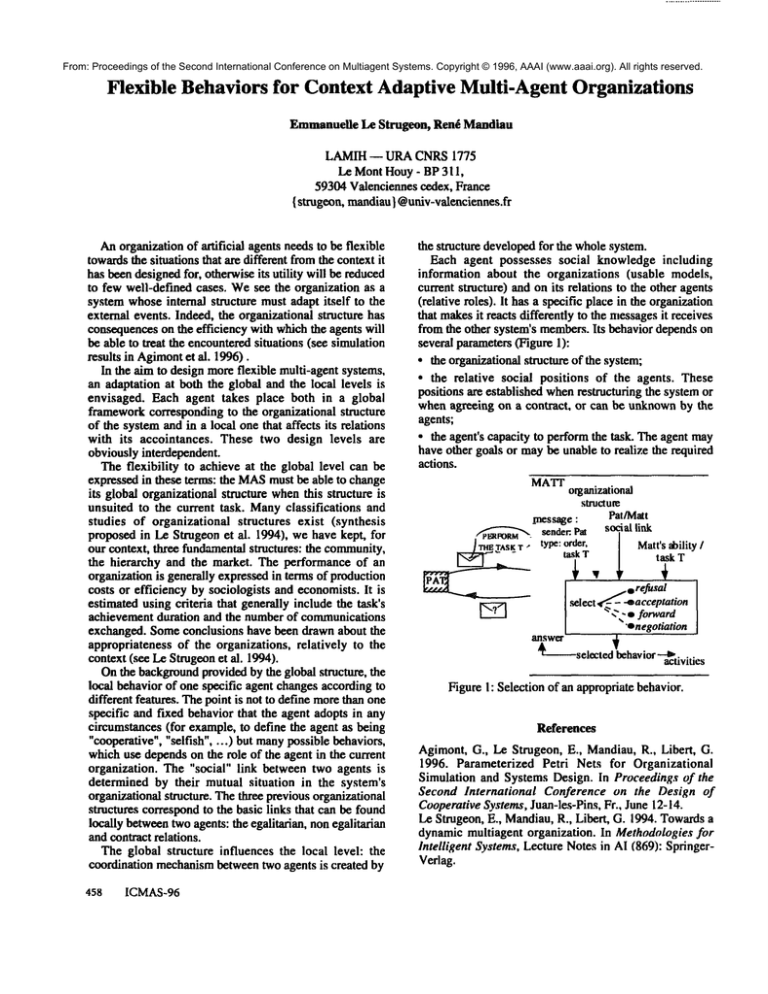
From: Proceedings of the Second International Conference on Multiagent Systems. Copyright © 1996, AAAI (www.aaai.org). All rights reserved.
Flexible Behaviors for Context Adaptive Multi-Agent Organizations
EmmanuelleLe Strugeon, Ren~ Mandiau
LAMIH-- URA CNRS 1775
Le MontHouy- BP3 ! 1,
59304 Valenciennes cedex, France
{ strugeon, mandiau} @univ-valenciennes.fr
Anorganization of artificial agents needs to be flexible
towardsthe situations that are different fromthe context it
has beendesigned for, otherwiseits utility will be reduced
to few well-defined cases. Wesee the organization as a
system whoseinternal structure must adapt itself to the
external events. Indeed, the organizational structure has
consequenceson the efficiency with which the agents will
be able to treat the encounteredsituations (see simulation
results in Agimontet al. 1996).
In the aim to design more flexible multi-agent systems,
an adaptation at both the global and the local levels is
envisaged. Each agent takes place both in a global
frameworkcorresponding to the organizational structure
of the systemand in a local one that affects its relations
with its accointances. These two design levels are
obviously interdependent.
The flexibility to achieve at the global level can be
expressed in these terms: the MASmust be able to change
its global organizational structure whenthis structure is
unsuited to the current task. Manyclassifications and
studies of organizational structures exist (synthesis
proposed in Le Strugeon et al. 1994), we have kept, for
our context, three fund~’nental structures: the community,
the hierarchy and the market. The performance of an
organization is generally expressed in terms of production
costs or efficiency by sociologists and economists. It is
estimated using criteria that generally include the task’s
achievement duration and the number of communications
exchanged. Someconclusions have been drawn about the
appropriateness of the organizations, relatively to the
context (see Le Strugeonet al. 1994).
Onthe backgroundprovided by the global structure, the
local behavior of one specific agent changes according to
different features. Thepoint is not to define morethan one
specific and fixed behavior that the agent adopts in any
circumstances (for example, to define the agent as being
"cooperative", "selfish", ...) but manypossible behaviors,
which use dependson the role of the agent in the current
organization. The "social" link between two agents is
determined by their mutual situation in the system’s
organizational structure. The three previous organizational
structures correspondto the basic links that can be found
locally betweentwo agents: the egalitarian, non egalitarian
and contract relations.
The global structure influences the local level: the
coordination mechanismbetween two agents is created by
458 ICMAS-96
the structure developedfor the wholesystem.
Each agent possesses social knowledge including
information about the organizations (usable models,
current structure) and on its relations to the other agents
(relative roles), it has a specific place in the organization
that makesit reacts differently to the messagesit receives
from the other system’s members.Its behavior dependson
several parameters(Figure 1):
¯ the organizational structure of the system,
¯ the relative social positions of the agents. These
positions are established whenrestructuring the systemor
when agreeing on a contract, or can be unknownby the
agents;
¯ the agent’s capacity to perform the task. The agent may
have other goals or maybe unable to realize the required
actions.
MATr
organization’,d
structure
Pat/Matt
_message
:
sender.Pat socialslink
type:order.
|
Matt’sability /
task T
task T
~
erefusal
b-r_-_n
.~Iect "~
=~--~
t,,tio,
¢ -~¯~cet,
forward
"¯negotiation
answer
selected behavior--4b...
a~tlVltleS
Figure I: Selection of an appropriate behavior.
References
Agimont, G., Le Strugeon, E., Mandiau, R., Libert, G.
1996. Parameterized Petri Nets for Organizational
Simulation and Systems Design. In Proceedings of the
Second International
Conference on the Design of
CooperativeSystems, Juan-les-Pins, Fr., June 12-14.
Le Strugeon, E., Mandiau,R., Libert, G. 1994. Towardsa
dynamic multiagent organization. In Methodologies for
Intelligent Systems, Lecture Notes in AI (869): SpringerVerlag.

